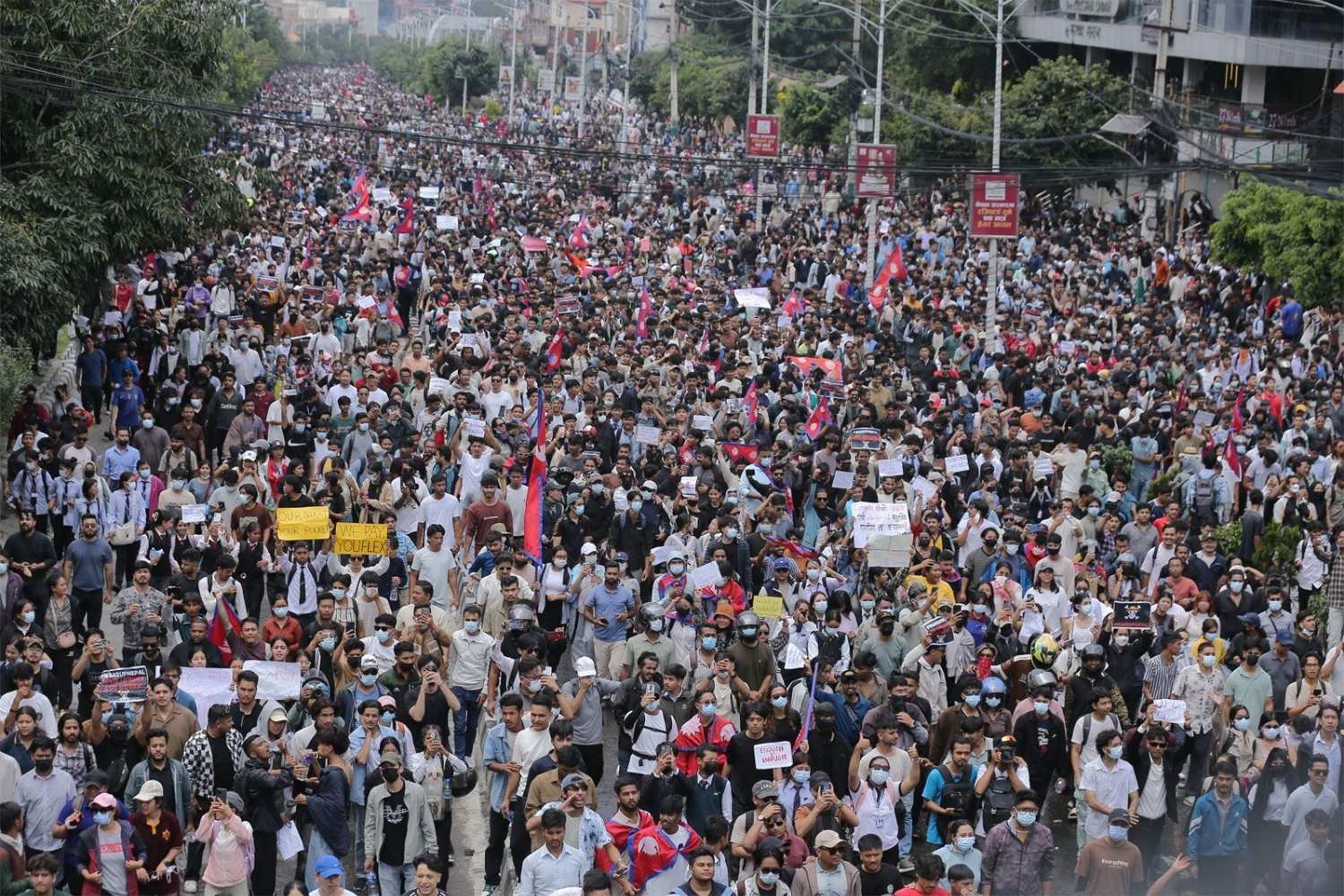
Why are there protests in Nepal? Nepal, a country rich in culture and history, has seen its share of protests over the years. These demonstrations often stem from political instability, economic challenges, and social issues. Political turmoil frequently ignites protests, with citizens demanding better governance and transparency. Economic hardships also play a significant role, as many Nepalese struggle with unemployment and poverty. Additionally, social issues such as ethnic discrimination and gender inequality fuel public outcry. Understanding the root causes of these protests provides insight into the challenges faced by Nepal and its people. Join us as we explore 30 facts about Nepal protests.
Nepal Protests: A Historical Overview
Nepal, a country known for its stunning landscapes and rich culture, has also experienced significant political upheaval. Protests have played a crucial role in shaping its modern history. Here are some key facts about these protests.
-
The 1950-51 revolution ended the 104-year rule of the Rana dynasty, establishing democracy in Nepal.
-
King Tribhuvan returned to the throne after the revolution, marking the start of a constitutional monarchy.
-
The 1990 People's Movement, known as Jana Andolan, led to the end of absolute monarchy and the establishment of a constitutional monarchy.
-
The 1990 protests resulted in the drafting of a new constitution, which guaranteed multi-party democracy.
-
The Maoist insurgency, also known as the Nepalese Civil War, began in 1996 and lasted until 2006.
-
The insurgency aimed to overthrow the monarchy and establish a people's republic.
-
Over 13,000 people died during the Maoist insurgency, making it one of the deadliest conflicts in Nepal's history.
-
The 2006 People's Movement, or Jana Andolan II, forced King Gyanendra to relinquish absolute power.
-
The 2006 movement led to the abolition of the monarchy and the establishment of a federal democratic republic.
-
Nepal's first Constituent Assembly was elected in 2008 to draft a new constitution.
Key Events and Figures
Certain events and individuals have played pivotal roles in Nepal's protest history. Understanding these can provide deeper insights into the country's political landscape.
-
King Mahendra's 1960 coup dissolved the parliament and established the Panchayat system, a party-less political system.
-
The Panchayat system lasted until the 1990 People's Movement, which restored multi-party democracy.
-
King Birendra, who ruled from 1972 to 2001, was a key figure during the transition to democracy in 1990.
-
The royal massacre in 2001, where King Birendra and most of the royal family were killed, shocked the nation.
-
King Gyanendra, who took the throne after the massacre, faced widespread protests for his attempts to reinstate absolute monarchy.
-
Prachanda, the leader of the Maoist insurgency, became Nepal's first Prime Minister after the monarchy was abolished.
-
The Comprehensive Peace Agreement in 2006 ended the Maoist insurgency and integrated Maoist fighters into the national army.
-
The Madhesi Movement, which began in 2007, demanded greater political representation for the Madhesi people in the southern Terai region.
-
The 2015 constitution faced opposition from various ethnic groups, leading to protests and a blockade at the India-Nepal border.
-
The blockade caused severe shortages of essential goods, including fuel and medicine, exacerbating the humanitarian crisis following the 2015 earthquake.
Social and Economic Impacts
Protests in Nepal have had far-reaching social and economic consequences. These impacts have shaped the country's development and its people's lives.
-
The 1990 and 2006 movements significantly increased political awareness and participation among Nepalese citizens.
-
Protests have often disrupted daily life, leading to school closures, transportation halts, and economic losses.
-
The Maoist insurgency led to the displacement of thousands of people, creating a significant internal refugee crisis.
-
Economic instability during periods of protest has hindered foreign investment and tourism, crucial sectors for Nepal's economy.
-
Social movements have brought attention to issues like caste discrimination, gender inequality, and ethnic marginalization.
-
Women's participation in protests has increased over the years, highlighting their role in political change.
-
The 2015 blockade strained Nepal-India relations, highlighting the geopolitical implications of domestic protests.
-
Protests have led to legislative changes, including land reforms and policies aimed at reducing poverty and inequality.
-
The youth have played a significant role in recent protests, using social media to organize and mobilize support.
-
Despite the challenges, protests have been instrumental in pushing for democratic reforms and greater social justice in Nepal.
Final Thoughts on Nepal Protests
Nepal's protests have shaped its history and continue to influence its future. From the fight for democracy to recent movements for social justice, these protests highlight the resilience and determination of the Nepali people. Understanding these events helps us appreciate the complexities of Nepal's political landscape and the courage of those who stand up for change.
Protests in Nepal aren't just about politics; they're about the voices of everyday people demanding a better future. Each protest, whether successful or not, leaves a mark on the nation's journey toward progress. As we reflect on these facts, it's clear that the spirit of protest is deeply woven into the fabric of Nepali society. This ongoing struggle for justice and equality is a testament to the enduring strength and unity of the people of Nepal.
Was this page helpful?
Our commitment to delivering trustworthy and engaging content is at the heart of what we do. Each fact on our site is contributed by real users like you, bringing a wealth of diverse insights and information. To ensure the highest standards of accuracy and reliability, our dedicated editors meticulously review each submission. This process guarantees that the facts we share are not only fascinating but also credible. Trust in our commitment to quality and authenticity as you explore and learn with us.
